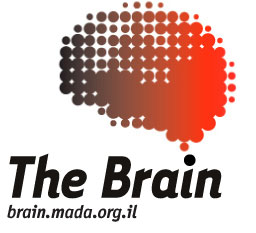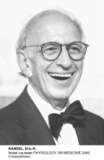


 |
||
|
2000 - Arvid Carlsson, Paul Greengard, Eric R. Kandel
What are the communication factors between nerve cells, and how do they lead to changes in the electrical activity on the neurons, which under certain conditions can be called "memory"? The human brain consists of more than 100 billion neurons, each forming thousands of synapses with other neurons, in which a chemical transmitter is released in order to reach other cells. Arvid Carlsson proved that dopamine is such a transmitter in the brain. He found that dilution of dopamine causes Parkinson's disease, which can be treated by L-DOPA - a precursor of dopamine. When L-DOPA is given, dopamine is produced again in the brains. Paul Greengard showed that the connection of transmitters to receptors on the cell surface starts the production of second messengers, which activate protein kinase, which binds phosphate to other proteins. This leads, for example, to the opening ion channels in the cell membrane that change the cell's electrical activity. Studding the nervous system of the sea slug, Aplysia, as an experimental model, Eric Kandel revealed the mechanism of long-term memory. Second messengers activate protein kinase that enters the cell nucleus and starts the production of new proteins, which change the form and function of synapses.
|
||



